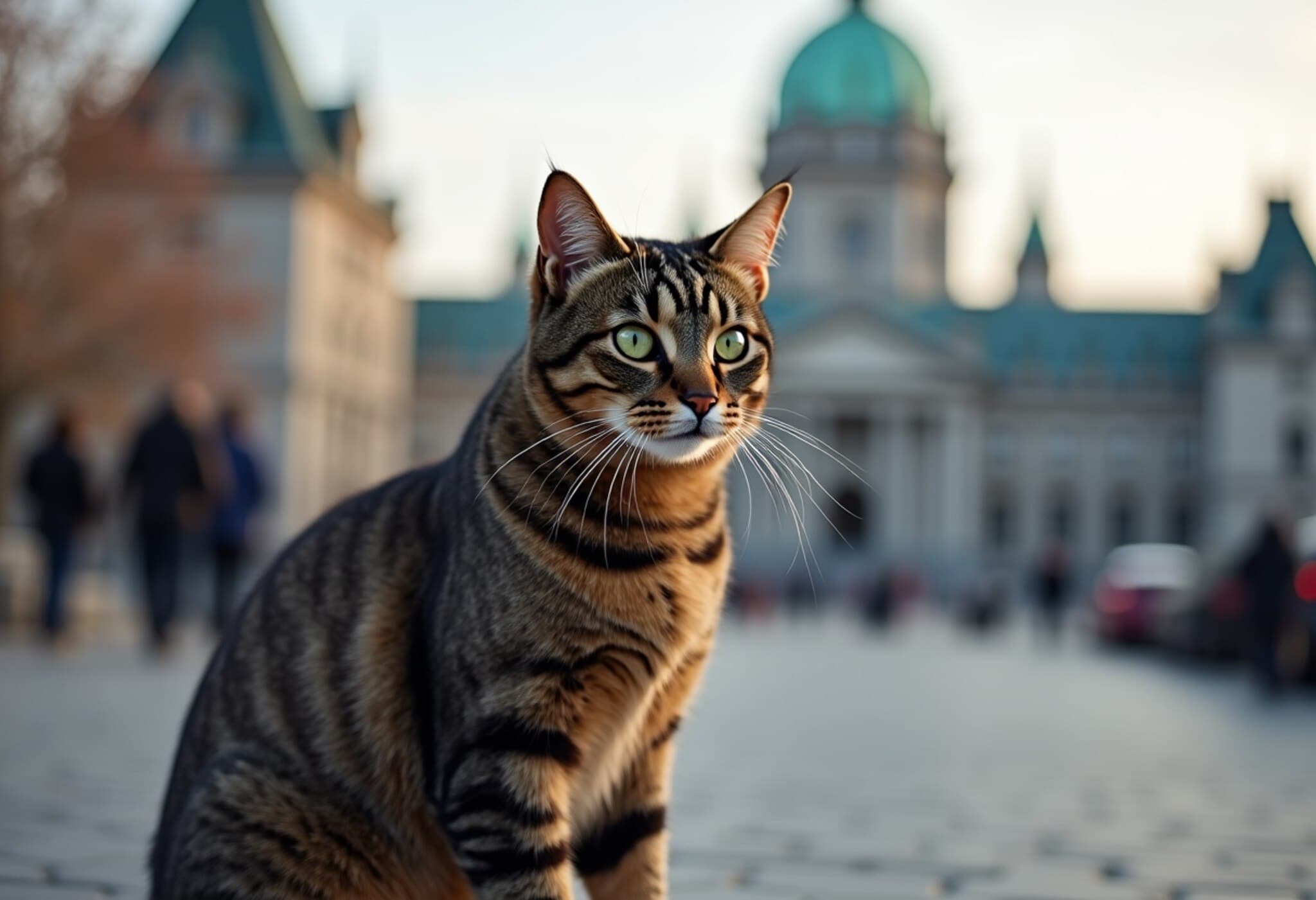Farewell to Coal: The Last Chapter of Canada’s Famous Parliamentary Cat Colony
For decades, nestled just behind the historic Centre Block on Ottawa’s Parliament Hill, a unique and informal community thrived—not among politicians and civil servants, but among a group of stray cats. Known affectionately by locals and tourists alike, this feline colony was a beloved, if unconventional, fixture of Canada’s capital. On July 8, 2025, Coal, the last surviving cat from this renowned colony, passed away at the age of 17, marking the end of an era.
A Silent but Beloved Presence on Parliament Hill
Unlike typical political tales from Parliament Hill, Coal and his companions captured hearts with their quiet companionship and quirky presence. The cats lived in makeshift shelters—crafted to vaguely mirror the architectural style of nearby Parliament buildings—hidden in the tangle of bushes behind the wrought-iron fence separating them from the House of Commons’ speaker’s entrance.
Coal, as recounted by his adoptive caretaker Danny Taurozzi, was likely abandoned as a kitten at the colony’s inception. Over time, the community expanded to include as many as 30 cats, all semi-wild but habituated to human visitors and volunteers who tended their shelters and ensured their wellbeing.
More Than Just a Colony: A Cultural Landmark
This remarkable gathering did more than just survive—it became a stop on the tourist trail, drawing busloads of visitors alongside the iconic political sites. Coal and his feline compatriots offered a uniquely warm, homegrown charm amidst the grandeur of Canadian politics. Their presence offered both locals and tourists a softer, more relatable glimpse of life behind the chambers.
- Unexpected Visitors: The colony once hosted notable figures such as former Prime Minister Stephen Harper and even the Dalai Lama, both of whom reportedly paused to visit the cats during their time on Parliament Hill.
- Community Care: Volunteers like Taurozzi dedicated countless hours to maintain the colony, ensuring the cats were fed, healthy, and sheltered—their efforts exemplifying grassroots compassion and civic engagement.
- Wildlife Neighbors: The colony also attracted curious raccoons, adding another layer to the dynamic ecosystem at the heart of Canada’s political district.
The Broader Significance: More Than Just Cats
The death of Coal, who succumbed to an aggressive cancer that had metastasized to his lungs, is symbolic on many levels. In a city where political leaders come and go, and institutional change is constant, the story of the Parliamentary cat colony offered continuity and a gentle reminder of nature’s presence amid human affairs.
Experts in urban wildlife ecology note that such colonies reflect the complex relationship between humans and feral animals in metropolitan settings—highlighting themes of stewardship, coexistence, and the challenges faced by stray animals in urban landscapes.
From a cultural policy perspective, the colony’s endurance and popularity call attention to the importance of embracing small-scale, community-led initiatives that humanize major civic spaces. They invite reflection on how cities can balance heritage, political symbolism, and informal cultural landmarks to enrich public life.
Looking Ahead: The Legacy of Coal and His Feline Family
With Coal’s passing, the colony’s physical presence on Parliament Hill will shortly fade. Yet the stories, memories, and photographs captured over decades ensure that this chapter remains etched in Canadian cultural history. As urban environments evolve, the tale of these cats underscores the unnoticed narratives that shape a city’s soul.
Coal’s story reminds us that behind the grandeur of governance lies everyday life — full of little joys, community care, and the unexpected friendships between humans and animals. It prompts policymakers, conservationists, and citizens alike to consider how we honor and integrate such living histories into future urban planning and cultural stewardship.
Editor’s Note
The demise of Coal marks more than the loss of a beloved cat; it signals an end to a quietly powerful chapter of Canadian public life where nature and politics converged unexpectedly. As we commemorate this cherished feline, it’s crucial to consider the role of grassroots care and urban wildlife in enriching our shared spaces. How might Canadian cities better support such informal yet meaningful communities amid rapid urban development? Coal’s story serves as a gentle nudge towards thoughtful coexistence and preservation of local heritage beyond traditional monuments.













